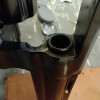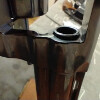WilsonCQB1911
Member
- Joined
- Jul 12, 2009
- Messages
- 50
My dad has an older Python he bought used years ago. Round count is unknown. Lockup is tight and it has minimal end shake in my not so educated opinion. It has no flame cutting.
I don't know much about revolvers so I can't tell if the forcing cone has eroded badly and needs to be addressed.
Does this look like normal or advanced wear?
Again, I'm not having any actual issues with shooting. Just wanted to see if it needs some maintenance before it gets used further.
Thanks!




I don't know much about revolvers so I can't tell if the forcing cone has eroded badly and needs to be addressed.
Does this look like normal or advanced wear?
Again, I'm not having any actual issues with shooting. Just wanted to see if it needs some maintenance before it gets used further.
Thanks!









